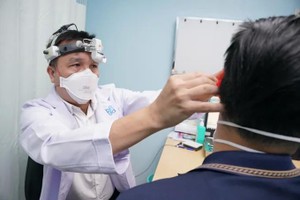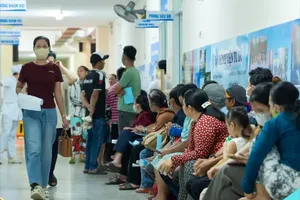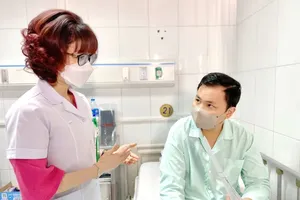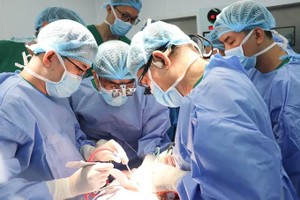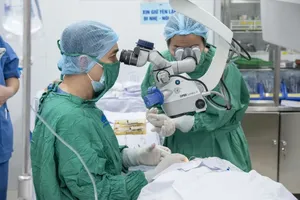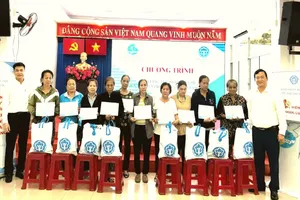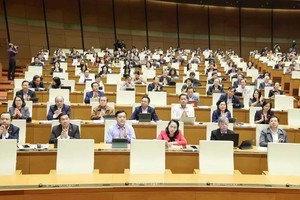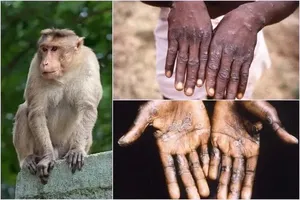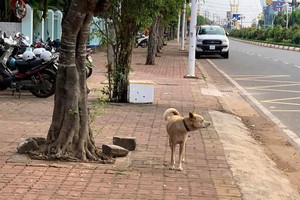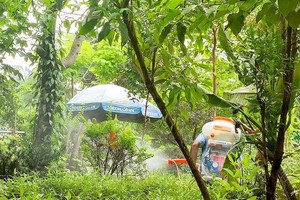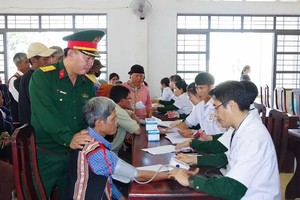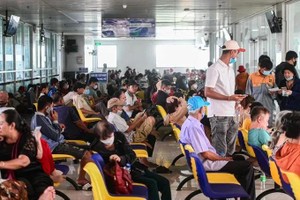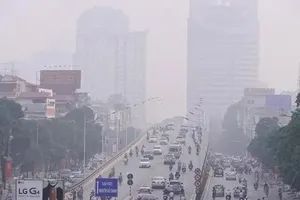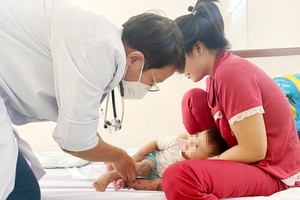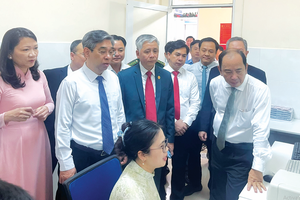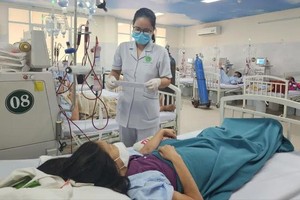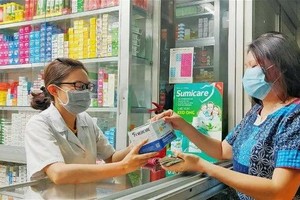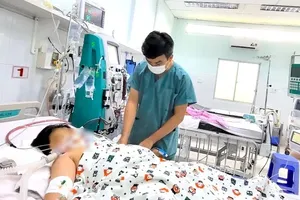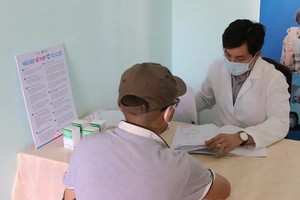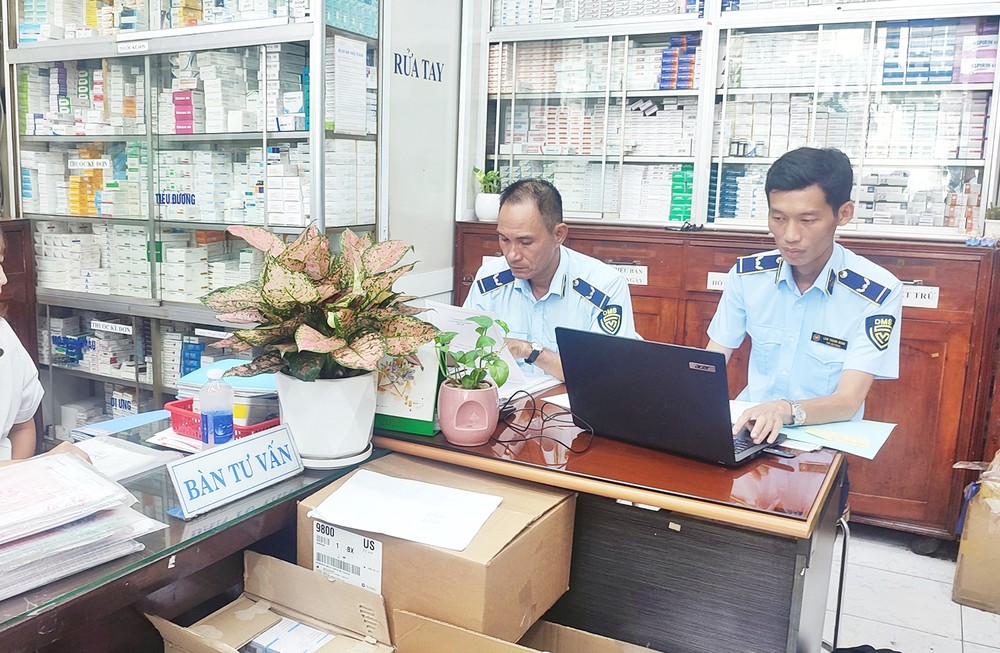
In late July 2024, drug testing centers in Thanh Hoa and Binh Duong provinces discovered that batches 04200623 and 28201123 of Cefixim 200 antibiotic did not meet quality standards. The labels on these batches indicated that Cuu Long Pharmaceutical Joint Stock Company was the manufacturer.
However, representatives from Cuu Long Pharmaceutical claimed that there were discrepancies between the samples they had on record and the tested samples, suggesting that the tested drugs were counterfeit. In August 2023, the company had previously issued a warning about counterfeit Cefixim, advising consumers to exercise caution when purchasing the drug.
Earlier, the District 10 Police Department in Ho Chi Minh City cracked down on a criminal ring involved in the production and sale of counterfeit pharmaceuticals. The investigation revealed that Lu Phu Tham in Ward 15 of District 10 led the ring since early 2022.
The district police force raided a house seizing 39 containers with 6,022 bottles and vials of counterfeit drugs without any accompanying invoices or certificates of origin. Further searches at warehouses and houses of the criminals in the ring, some 109 boxes containing over 100,000 blister packs, boxes, bottles, and vials of various counterfeit drugs were uncovered plus more than 35,000 counterfeit packaging, labels, and stickers; as well as date printers, heat presses, and other tools used for drug counterfeiting.
According to the World Health Organization, approximately 11 percent of medicines in developing countries are counterfeit, potentially causing the deaths of tens of thousands of children each year from diseases like malaria and pneumonia.
In Vietnam, counterfeit medicines and substandard drugs have recently resurged, causing significant public concern. Statistics from the Vietnam Pharmaceutical Enterprises Association show that a majority of counterfeit drugs are expensive antibiotics from well-known pharmaceutical brands.
Counterfeit drugs are often produced with a high degree of sophistication, making them difficult to detect without a direct comparison between the counterfeit and authentic packaging and instructions.
Market regulators have acknowledged that it is challenging to accurately differentiate between genuine and counterfeit pharmaceuticals using conventional methods. Laboratory testing to analyze the composition and quality of drugs is the most effective way to determine authenticity, but it is a time-consuming and expensive approach. This poses a significant hurdle in the timely detection and eradication of counterfeit and substandard drugs.
Healthcare professionals warn that the proliferation of counterfeit drugs has severe consequences for patients. Consuming counterfeit medications can lead to wasted expenses, treatment failures, and worsened health conditions. In many cases, patients with serious illnesses require specific medications or antibiotics. Still, the use of counterfeit drugs can delay critical treatment, resulting in more severe complications or even death. Some counterfeit drugs contain substandard active ingredients or harmful impurities due to substandard manufacturing processes, posing a significant risk to consumers.
There are concerns about the prevalence of counterfeit drugs in Vietnam.
According to Associate Professor Pham Khanh Phong Lan, Vice President of the Vietnam Pharmaceutical Association, the number of cases involving counterfeit and substandard drugs has decreased significantly over the years, from over 7 percent in 1991 to less than 0.1 percent in recent years. However, she questioned whether this decline accurately reflects improved control over the pharmaceutical market.
Dr. Lan further highlighted the severe health consequences faced by individuals who consume counterfeit or substandard drugs, including fatalities. She expressed a strong view that individuals who knowingly produce counterfeit drugs are committing mass murder and deliberate homicide. In her opinion, the production and distribution of counterfeit drugs is the most serious offense, and those involved in these activities should be treated as criminals.
Tracing the origin of counterfeit Cefixim 200 antibiotics
The Drug Administration Department of the Ministry of Health issued an official document requesting the Thua Thien Hue Provincial Department of Health to urgently inspect the Phu Khang Pharmacy at 97 Dinh Tien Hoang Street in Hue City’s Dong Ba Ward for compliance with pharmaceutical business regulations. Simultaneously, the department asked for cooperation with relevant agencies to verify and trace the origin of the counterfeit Cefixim 200 product discovered at the Phu Khang Pharmacy.
Earlier, on July 30th, the Drug Administration Department had sent a document to the Departments of Health of provinces and cities regarding the discovery of counterfeit Cefixim 200, requesting relevant agencies’ cooperation in tracing the origin of the counterfeit Cefixim 200 product and strictly handling the organizations and individuals involved in the violation.
The Departments of Health at local levels have notified drug businesses and users about the counterfeit drug with the following information on the label that is Cefixim 200 coated tablets, registration number VD-28887-18; batch numbers 15030723, manufacturing dates 030723, expiry dates 030725; batch numbers: 04200623, manufacturing dates 200623, expiry dates 200625 and batch number 28201123, manufacturing dates 201123, expiry dates 201125. Cuu Long Pharmaceutical Joint Stock Company is the manufacturer of the drug.
